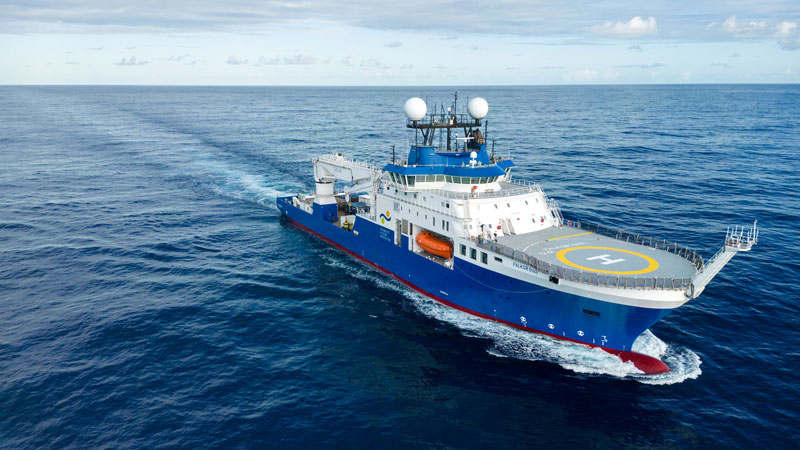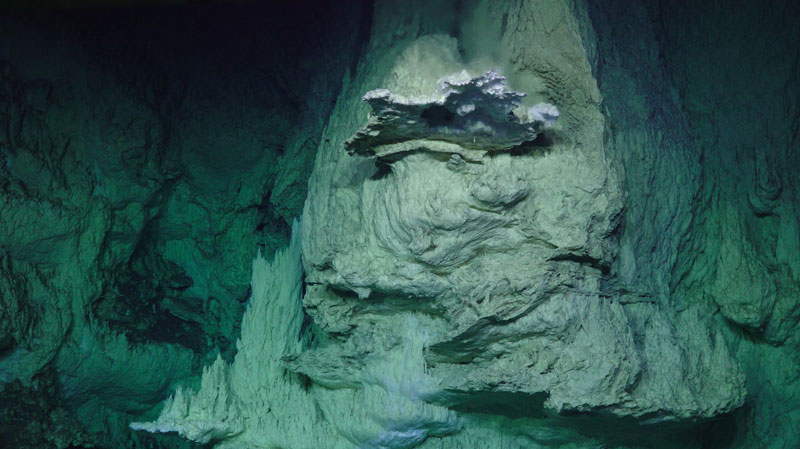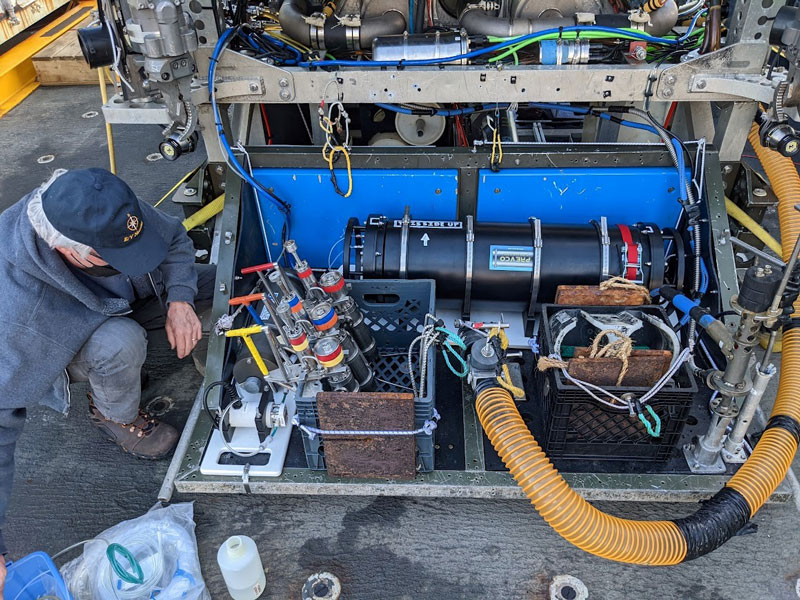In Search of Hydrothermal Lost Cities: Searching for Serpentinization-Driven Hydrothermal Activity on Oceanic Core Complexes of the Mid-Atlantic Ridge
(FKt230303)
Expedition Overview
From March 3-April 11, 2023, a team of researchers will search for new examples of serpentinization-driven hydrothermal venting on the seafloor near the slow-spreading Mid-Atlantic Ridge. This will be the first expedition on Schmidt Ocean Institute’s Research Vessel Falkor (too).

In 2000, the discovery of the Lost City hydrothermal vent field near the Mid-Atlantic Ridge revealed a new kind of hydrothermal system driven by serpentinization. Serpentinization is a heat-producing chemical reaction between seawater and mantle rocks that provides a source of chemical energy for life in the deep ocean. This type of venting is not well documented or understood.
To learn more about it, this research team will search for other "lost city" style vents. They will use ship-based multibeam mapping to guide operations; conductivity, temperature, and depth (CTD) systems to detect signs of venting in the water column (e.g., physical or chemical changes); two mapping autonomous underwater vehicles to locate the vents; and remotely operated vehicle (ROV) SuBastian to collect imagery; samples of fluids, rocks, and marine life; and more.
Specific research objectives include deploying a recently developed sensor on SuBastian for measuring methane in situ in real time, enabling instant confirmation of active venting, and collecting and analyzing samples of microbes and viruses from water column, seafloor, and sub-seafloor habitats.
With this project, the team aims to improve our understanding of this form of hydrothermal activity, in particular its prevalence and geochemical and ecological significance.
ROV dives will be livestreamed on the Schmidt Ocean Institute website, which will also feature an expedition-specific page with videos and blogs.
This is a collaborative project involving Schmidt Ocean Institute, NOAA Ocean Exploration, NOAA’s Pacific Marine Environmental Laboratory, the University of Washington, Oregon State University, Woods Hole Oceanographic Institution, MBARI (Monterey Bay Aquarium Research Institute), the University of Victoria, University of Toronto, Dalhousie University, and IFREMER (Institut Français de Recherche pour l’Exploitation de la Mer).



Published March 3, 2023